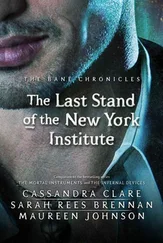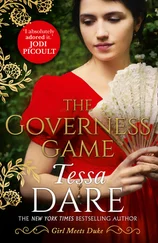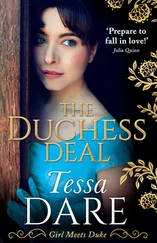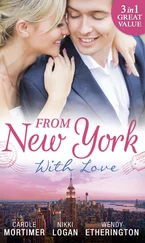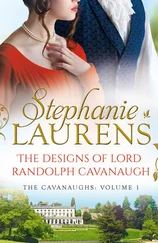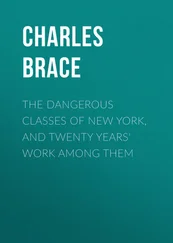I remembered walking down Perry Street with Mike Harrington one fresh fall afternoon in the late fifties when he said with a smile, “Once you free-lance, I can’t imagine ever going back to a regular job.” I agreed, though later, when Mike had a wife and children, he would sensibly take a teaching position at Queens College and still have time to write and carry on his lifelong work as a socialist leader. Free-lance meant freedom, and so did New York, especially Greenwich Village, until that not so fine morning when the garbage trucks really got to me and all of it seemed like a trap, a smog-bound prison.
I’ve got to get out of here .
I told it to two different people that day. One was the second of the Freudian psychoanalysts I’d seen every weekday, except during August, for five years, and he responded just as his almost identical predecessor had: “Yes, go on.” I said I would, for one more year. I was going to stick to the analysis that much longer because I’d already invested so much time in it (that and my parents’ money, which I’d pledged to pay them back, and finally did, more than ten years later). When I started I was told five years was about the minimum for the treatment to be successful—the patient free, golden, glowing. But no end seemed in sight, and I’d begun to meet people around New York who’d been in analysis twelve years, even fifteen or twenty, and I said to my inscrutable doctor, “I’m not going to spend my life at this.” It was already slipping away, maybe half had already gone, more if I died dramatically young, like Dylan Thomas at thirty-nine, whose ghost I toasted when I lifted my glass in the White Horse. Hell, I was almost thirty.
“Yes, go on.”
I did. I went to Harold Hayes at Esquire , who was always able to dispatch me on assignment when I felt stir crazy and needed to get out of town. But this was different, this was a longer, more permanent respite and change I sought, yet if anyone would know, Harold would know, and I considered him a friend now as well as my editor. He took me to a lunch of fat hamburgers and frosty mugs of beer at some new spot around the corner from his office at 488 Madison, a place where you sat in one of those long-armed wooden school chairs, balancing your mug and plate on the extended arm. We joked as we usually did of my ritual request to do a piece on a luxury cruise, giving as my journalistic rationale for a freebie vacation the fact that the legendary Agee had written such a story for Fortune . It was no go again and Harold laughed, then took a swig of his brew and said, “O.K., what is it you really want, Wakefield?”
Without hesitation, the response came: “Harold, I’ve got to get out of here.”
“New York?”
“Yes. For at least a year. I need a break. How do I do it?”
“Apply for a Nieman fellowship in journalism. Gives you a year at Harvard. You take some classes, write, do what you want.”
“I thought that was only for daily newspaper people.”
“It used to be. They’re broadening it out. I got one as a magazine editor—why shouldn’t you get one as a magazine journalist? I’ll write you a recommendation.”
At that moment I saw what came to be popularly known, during the Vietnam War, as “the light at the end of the tunnel.” The city I’d loved so much had become the tunnel, maybe because the city had come to seem so much the same as my psychoanalysis, that passage that kept getting longer and darker, without any end in sight. New York, the enlightened place of liberty that held among its hopes the freedom offered by probing the psyche through lying on the couch, somehow was merging with the couch in my conception of it—long and black and cold.
The light was not just the hope of the Nieman but New England itself: open spaces, the North, nature, fresh air, silence, all those elements I had once scorned as boring now seemed like succor. I’d discovered the country by visiting Norman Thomas di Giovanni, the writer I’d met through The Nation when he was doing pieces for the magazine from Boston, where he’d lived in a loft in the North End, the city’s Little Italy, and worked in a neighborhood grocery while researching a book about Sacco and Vanzetti and translating poetry from Spanish.
Norman had moved to a cabin by a pond in New Hampshire with his lovely and brilliant companion Priscilla Hudson, and invited me to visit. Walking the pond, eating pasta and pesto, made from fresh basil leaves Priscilla grew in the garden, as well as Norman’s proudly planted corn, tomatoes, and beans, I had a taste of that other promise of the good life. Maybe I was coming to the part of that life Malcolm Cowley wrote about in Exile’s Return when his friends from the twenties came back from Europe and fled New York in “a great exodus toward Connecticut, the Catskills, northern New Jersey and Bucks County, Pennsylvania.”
I took a deep breath of the fresh, smogless, soot-free air of New Hampshire and arranged to rent, for $40 a month, one half of a converted ice house near Norman in the town of Hudson when I ended the analysis the following summer of 1963. Whether I got the Nieman or not, I planned to hole up and finally realize the dream, the writing of the Novel, living on pasta and pesto, corn and beans—and air. I’d be living by a pond, just like you know which great writer, who also sought solitude and peace and advised us to “simplify, simplify,” which meant to anyone weary of scrambling through the maze of Manhattan—leave.
The knowledge that I was going to be leaving at the end of the next year’s worth of analysis gave me a goal, got me organized, tugged me out of the torpor of looking down open-ended years on the couch. (The couch began to look like a slide, tilting, aimed for dumping me down to the dark nothing, Hemingway’s nada .) I followed C. Wright Mills’s advice for dealing with crisis, beginning again: “Set up a new file!” The determined courage of his voice came back in memory, stabbing with the realization of his recent and premature death, which was also the death of part of what I previously meant when I said “New York.”
To shoulder more of the financial burden of my own analysis, which was said to be part of the trick of having it work, I sold the idea for collecting, editing, and writing the introduction to what I felt was a much-needed anthology of fiction and factual work on drug addiction. I first learned about the problem in Spanish Harlem, and continued to write and learn about it and work as a volunteer for the narcotics committee, drawn to the subject with a mixture of fear and fascination. As the addict author said in The Fantastic Lodge , I “had eyes,” and I included that part of her pseudonymous book in my prospectus.
I presented the idea—we didn’t say “pitch” then—to an editor at Fawcett with a reputation for no-nonsense fairness and honesty, Knox Burger, the guy who first found a story of Vonnegut’s in the slush pile at Collier’s and published it, and later brought out Kurt’s early novels in paperback. Already balding and wittily acerbic (the term “crusty” is used with affection by those who know him), Knox listened attentively, fired some pertinent questions at me, then said with the decisiveness and clarity one always hopes and dreams of hearing and seldom does: “We’ll do the book.”
I divided my working time among that project, my magazine pieces, and my newly resumed attack on the magic novel. Every afternoon I’d leave my own apartment, with the file cabinet and factual material from which I was hammering out my “living by the pen” (the money for rent, food, booze, and a greater share of the monthly analytic bill, the biggest cut of all), and go to a corner I was given in a sunny part of my dear friend Jane Wylie’s living room on Perry Street. The room overlooked one of those small Village gardens, which always made me think of a poem by May Swenson, “The Garden at St. John’s in the City” (“this garden / of succulent green in the broil of the city”), and of May herself, who lived only a few blocks away and whose head-on, solid, gum-chewing confidence in my writing was part of my hope and inspiration and nourishment of soul.
Читать дальше

